Review: 2017 Yamaha YZF-R6, Track Test
After almost a decade a revised YZF-R6 has arrived. Here is our 2017 YZF-R6 review. Test: Jeff Ware Photography: Colin Chan, Jeff Ware
Back in November 2016 when Yamaha revealed a revised YZF-R6 for 2017, it really did surprise the motorcycle industry and the motorcycling public. So much talk about the SuperSport 600 category being over, and rightly so.
Declining sales and ever increasing options around the 800cc mark haven’t helped the screamer class at all. World Supersport is as strong as ever but the writing is on the wall… The mighty 600cc class has limited days. A bit like 250 Proddies faded away and are now a distant memory that all of us boy and girl racers can look back on and be glad we were there…
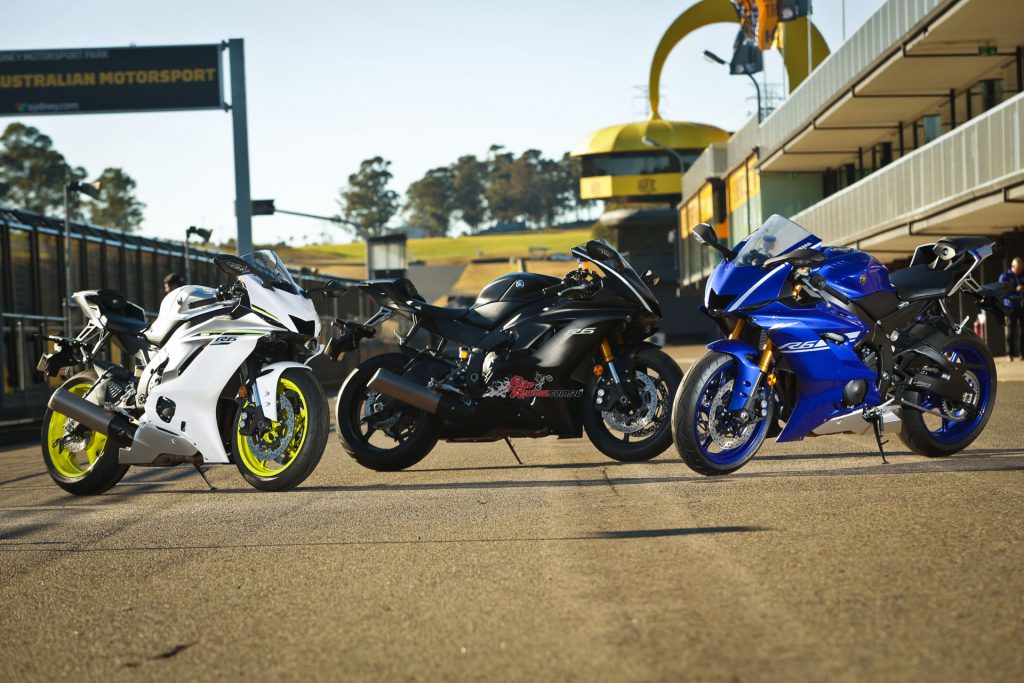
Costing $17,499 + ORC, the 2017 Yamaha YZF-R6 comes in Intensity White, Tech Black and Team Yamaha Blue and is available in dealers now.
Well, Yamaha have gone against the trend and invested in the category by revising and updating the outgoing YZF-R6. Yamaha make it clear in their press info on the bike that the SuperSport category is important to them and that the R6 remains a key ingredient in Yamaha’s race bred DNA.
I take my hat off to them, as a big fan of 600s I’m more than happy and after riding the bike I’m convinced they have done the right thing with this machine…
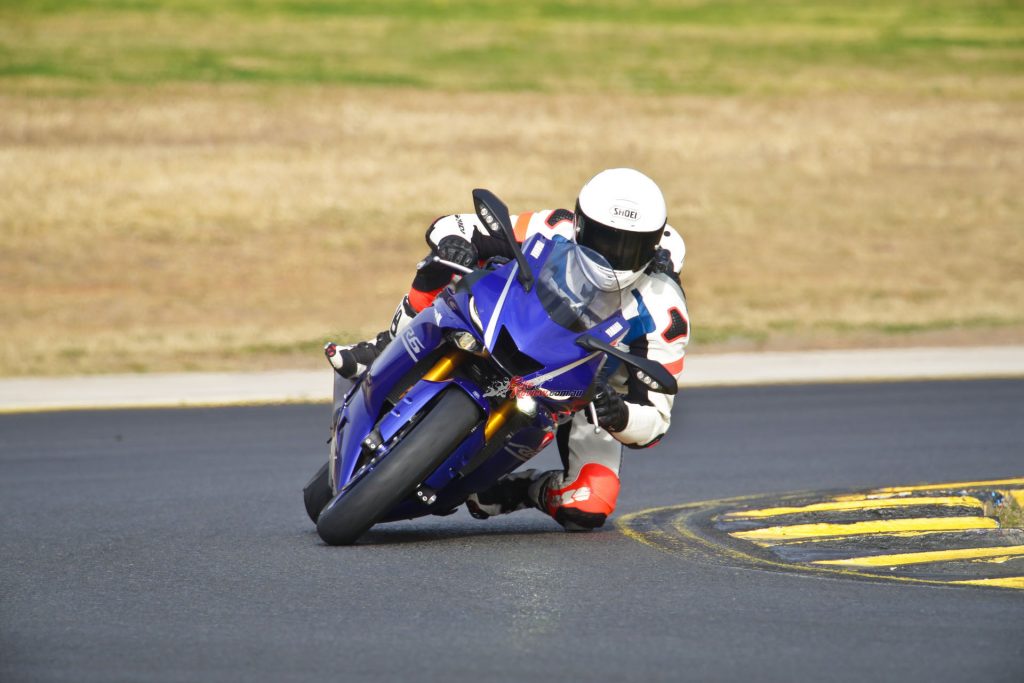
The 2017 YZF-R6 has the same rider triangle and ergonomics as previously but with an all-new look and more aerodynamically efficient bodywork. It also has new forks, brakes, electronics, sub-frame, tank, seat and even a quickshifter.
The updates come almost a decade after the 2008 model, which had some revisions over the original 2006 model. The updates are ones that prove Yamaha listen to their customers as they have addressed the few issues that were leaving the R6 feeling dated brakes, suspension, electronics and styling…
The standout of course is the YZF-R1M inspired sleeker more modern bodywork. The new low drag fairing provides a claimed eight per cent reduction in drag. It has an M1 MotoGP inspired central air intake and those stunning R1 LED headlights. To help further with the aero, the indicators are now integrated into the mirrors. Neat.
Behind the new fairing is an all-new R1 style dash with a huge analogue tacho and 16,500rpm redline and a large easy to read digital speedo, along with a multi-function display including the TCS and ABS setting and the D Mode setting.
The forks are new and huge at 43mm. They are top spec KYB units lifted from the R1 and revised internally for the R6. The axle diameter in up now to 25mm, while the bottom triple-clamp has been reduced to give more feedback, as the extra rigidity of the new axle and forks was too much.
There are also new front brakes in the form of large semi-floating stainless-steel 320mm rotors (up from 310mm) and a Nissin radial-pull master-cylinder operating new four-piston calipers. Of course, ABS is now standard equipment so the brakes are a more modern package now.
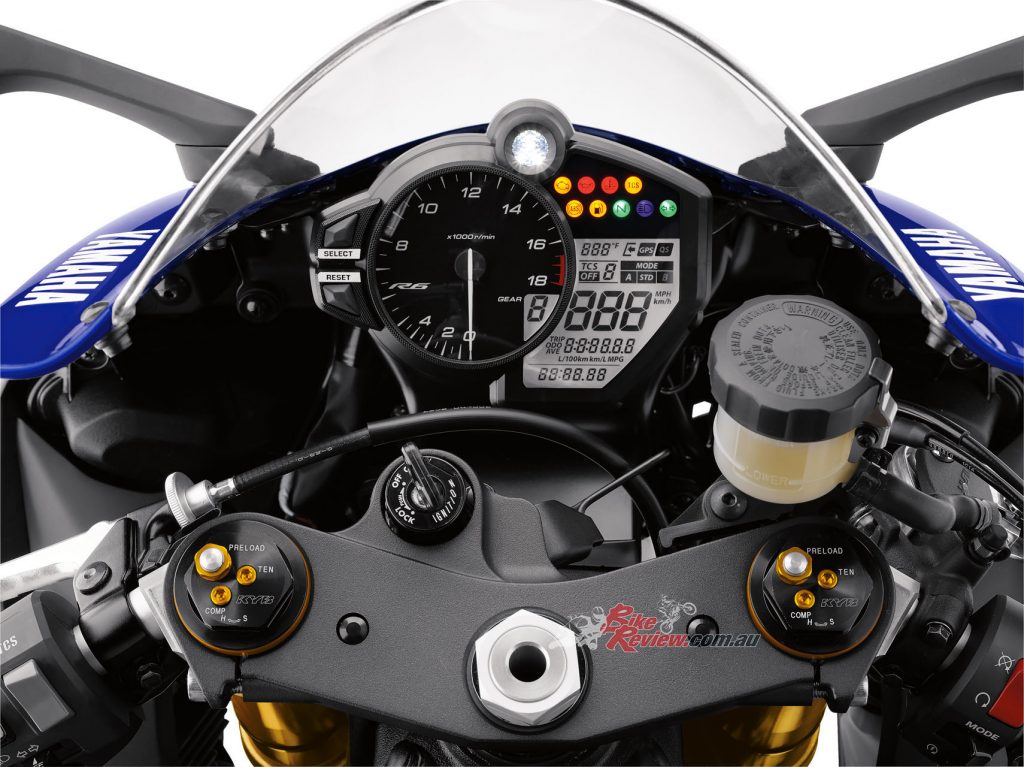
A completely new dash layout for the 2017 YZF-R6 includes analogue tacho, digital speedo and a multi-function display that is easy to read.
In terms of frame changes, the geometry remains the same as does the main frame and swingarm, however, a new slimmer magnesium sub-frame is now fitted and the fuel tank is reshaped and made out of aluminium and is 1.2kg lighter.
The seat is reshaped to stop the rider sliding up onto the tank too much and is also narrower to help move around on the bike during cornering. Seat height is unchanged and the rider triangle also remains the same as it was before, which is a good thing in my opinion.
The electronic package is a good upgrade over the previous model. The YCC-T (Yamaha Chip Controlled Throttle) and YCC-I (Yamaha Chip Controlled Intake) is now joined by TCS (Traction Control System) operated by an easy to use left ‘bar mounted switch. There are 6 levels with 1 being the least intrusive and 6 being for slick conditions. The TCS can also be switched off. It is a wheel speed sensor system, but works well and is a welcome addition to the bike.
The other big improvement is the Quick Shift System (QSS), which gives clutchless upshifts and worked reliably and smoothly during my testing.
The mighty 599cc DOHC 67mm x 42.5mm 16-valve engine remains unchanged however now meets Euro4 emissions regulations, so there must be some changes to the exhaust and tuning to achieve that. Power felt near identical to the old model to me, possibly a few hp less.

The TCS or Traction Control System has six levels plus the option of switching it off. I settled for L3 on the day as the rear tyre was worn and the track cool. I tried all option aside from off.
THE RIDE – 2017 YAMAHA YZF-R6
I couldn’t wait to test the new R6. I’ve ridden every model and never been disappointed and having spent probably 100-odd hours on the previous generation bike between 2006 and 2016, I have to admit I knew that if the forks and brakes were good on this new model, then the bike would be fantastic.
The YZF-R6 won almost every SuperSport Shootout I ran in the past decade and we know how many race wins the bike has had. There have been very few motorcycles come along to challenge the R6 on track and for a bike to remain so competitive for so long, it shows how right Yamaha got it in the first place. The heart of the matter has always been the screaming yet tractable inline four-cylinder engine, backed up by great geometry and ergonomics.Yamaha haven’t altered those things. When you are onto a good thing, etc…
With all three of those key ingredients retained, the new bike felt familiar to me as I hopped on for my first session at Sydney Motorsports Park. With only a dozen fellow riders, I almost had the track to myself, so I quickly set about exploring the limits of the bike and learning the new changes.

Short-shifting into turn three was easy now with the new QSS or quickshifter. The R6 also had good drive and acceleration up the hill to turn four. It was great fun to ride.
After a warm up lap, where, if I had been blindfolded I would not have known if I was on the new or outgoing R6, I put my head down and go nuts. Screaming past the start/finish line in fifth gear (no need for sixth) the tacho nudges 16,500rpm and the speedo goes north of 250km/h (254km/h was top speed).
Feeling at home and confident, I ride past the usual braking marker and sit up, shift back to fourth and run the bike fast into the apex of turn one. The slipper-clutch is brilliant as always and the bike carries 250-like corner speed. The bike feels planted and solid through the bumpy apex and I turn the throttle to the stop for the exit, hitting 200km/h just before braking hard for turn two.
This is where I really get a pleasant surprise. The brakes are powerful and give great feel at the fingertips. The forks are supportive and as I brake deep into the apex, get the bike turned and on my knee, I can feel the improvement in the front-end. It feels like a well set-up kitted previous model in the forks and heaps better in the braking department.
Releasing the brakes and cracking the throttle, the bike settles instantly, tracks through turn two and changes direction into three rapidly and accurately. The quickshifter is a bonus here as short-shifting to third gear is easier. I did have to be careful as a few times I tapped the sensitive shifter early and it threw the bike off line.
Into three, the bike tracks nicely, driving up the hill to turn four with the ferocious acceleration it always had. Again, into turn four on the run down the hill, I appreciate the support and feel from the new front-end, not to mention the brakes.

Braking downhill into turn four highlighted the support the new forks offer and the strength and feel of the new front braking system. I had no issues with the non-switcheable ABS, in fact, I did not feel the ABS at all.
The direction change into the tricky turn five is fast and this is the only turn on the circuit I have to get just right to maintain a tight line on the R6. If I’m a little out on entry I am running off the ripple strip/South Circuit Entry, on exit. It’s the shock settings. I’m heavy at 95kg in gear and the shock is squatting and staying down on the gas off five.
Easy fix, a bit more preload and compression would do it. As I brake hard for turn six the bike remains inline and stable despite the huge dips and bumps here. Into the apex of six, the bike almost gets air, the bumps are so bad. The shock copes OK, and settles quickly. The forks are the standout though.
Up the hill to eight the R6 screams, hitting the limiter in third on the crest. I grab fourth via the QSS and drive through the corner, letting the TCS do its thing and it does so well. The bike can move out slightly but the slide is maintained once the TCS knows where it is and what it is doing, just around the apex. I have it on the fairly intrusive L3, which I liked, after trying all of the settings aside from OFF.
Braking hard for turn nine and getting in there tight and comfortable is a test for any bike and the R6 made it easy as I slightly overcooked things. Honestly, for a road registered motorcycle straight out of the box, I can’t believe how good it is here. Online, tight, high corner speed and the ability to get the power down early and fast. Amazing…

Tight downhill turns like turn nine challenge any bike. The R6 was easy here, even a few times when I got in too deep, I could pull the bike back on line with complete confidence in the front-end. It also hooked up and drove hard off this corner, which was great fun.
It’s the drive off nine that really gave me a smile. By the outside ripple strip the engine was screaming like mad, the insane induction noise the R6 makes piercing my ear drums and making the ride so exciting, even on my own I felt like I was in a SuperSport race. This bike brings the racer out in me, that’s for sure.
Third, fourth and on the limiter tipping into turn 10 at 16,500rpm, the R6 feels sure footed. The front tyre well and truly planted through this often vague feeling long right hander. I ease the brakes on halfway in and the brake feel is intimate and strong, making it a breeze to wash speed off, shift back a gear and flick the bike left for the long double turns 11 and 12 onto the main chute for another lap.
Again, the R6 feels like a racebike, as I easily pull it into the second apex of the final corner, even while at maximum lean, and fire it off down the straight, grinning like a mad man…
Lap after lap in my four sessions on the bike I felt in complete control and at home on the new YZF-R6. The bike makes me feel young again, not like the 41-year-old washed up racer I am. After riding the R6 for half a day, I left SMSP feeling revived, refreshed, satisfied and just downright happy.
The R6 remains the bike to beat on track in class, in my opinion, but it doesn’t have to be a racebike, as proved to me at SMSP. The R6 is the ultimate track day bike and probably still is, and we will find out soon, a stupifyingly grand Sunday Scratcher. To make a 40-plus plonker like me walk away from a ride and think, ‘Yep, I’d buy that bike,’ proves that the class is still valid. There are customers out there.
If you want to smile like me, then I suggest you get to your Yamaha dealer ASAP and ride one of these little screamers. Long Live the SuperSport YZF-R6…
2017 YAMAHA YZF-R6 SPECIFICATIONS
Price: $17,499 + ORC
Claimed power: N/A 2017 (2016 – 79.3kW[106.3hp]@14300rpm)
Claimed torque: N/A 2017 (2016 – 60Nm[44.4ft-lbs]@10500rpm
Dry weight: 176kg (190kg wet)
Fuel capacity: 17L
Engine: Four-cylinder inline DOHC 16-valve liquid-cooled four-stroke, 599cc, 67 x 42.5mm bore x stroke, 13.1:1 compression, TCI ignition, fuel-injected, YCC-T, variable intake trumpets, TCS, D-Mode, YCC-I, QSS
Gearbox: Six-speed, QSS
Clutch: Wet multi-plate slipper clutch
Frame: Aluminium DeltaBox, alloy swingarm
Rake: 24°, Trail: 97mm
Suspension: KYB 43mm fully adjustable inverted forks, 120mm travel, Monoshock fully adjustable rear shock, 120mm travel.
Brakes: Dual 320mm rotors with four-piston calipers and radial-pull master-cylinder (f), 220mm rotor and twin-piston caliper (r).
Tyres: 120/70-17in (f), 180/55-17in (r)
Dimensions:
Wheelbase: 1375mm (5mm less than 2016)
Seat height: 805mm
Ground clearance: 130mm
2017 YAMAHA YZF-R6 Gallery
The Verdict | Review: 2017 Yamaha YZF-R6, Track Test
Serious fun!
SuperSport screamer with a modernised twist…























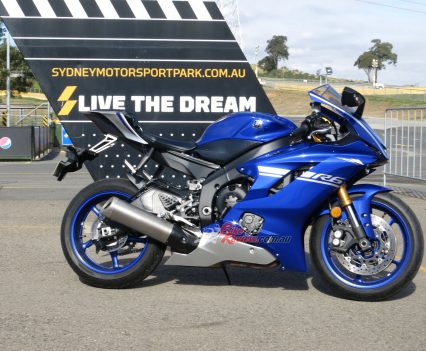









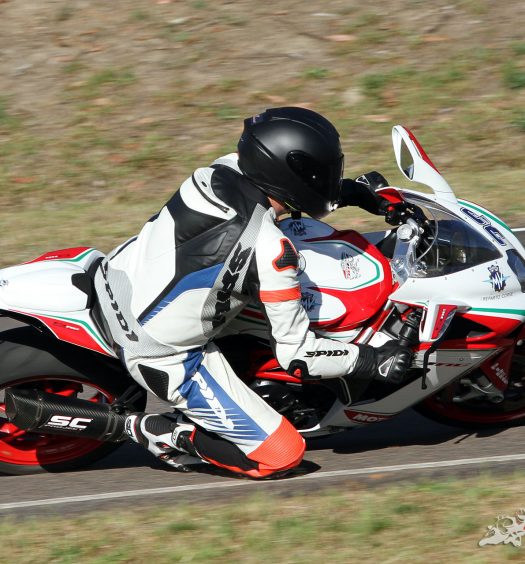















October 10, 2019
Nice article.
Seat height is 850mm